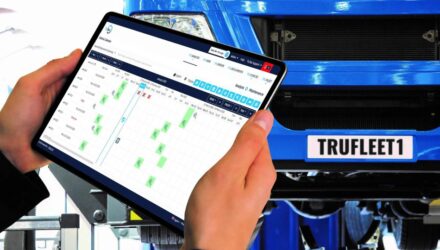
The stereotype of white van man, as described by Wikipedia, is a “selfish, inconsiderate… and aggressive” individual.
Indeed van drivers finished bottom of the list in a TomTom Telematics study of which road users are considered the safest or most careful.
The LCV parc, however, makes a significant contribution to the UK economy and many van drivers may be being unfairly maligned, tarnished by an outdated reputation.
The Freight Transport Association (FTA) has attempted to create a blueprint for best practice through its Van Excellence scheme and there would certainly appear to be commitment from many operators to improve standards of professionalism.
Recent TomTom Telematics research found that fewer than one in ten van drivers have been involved in a road traffic collision in the last 12 months and 60 per cent believe they are made a scapegoat for perceived poor driving standards.
A positive reputation can take years to build however and more must clearly be done if there is to be an effective reversal of ingrained, negative perceptions.
The same study suggests many van drivers are not receiving enough help from their employers. Only 34 per cent claimed to receive regular driver training, only one per cent receive monthly training and only 11 per cent receive training more than once a year.
Furthermore, 46 per cent say their driving performance is not monitored, making it difficult for organisations to build a picture of how their employees are performing behind the wheel.
The management of driving behaviour can not only help improve the business bottom line by helping to cut fuel usage, it can also help protect driver safety, the environment and a business’s brand image.
Taking a reading of current driving standards to identify where problems exist, setting performance benchmarks, and establishing targets for improvement offer appropriate first steps for those with a responsibility for fleet.
Telematics can be a valuable technology partner in achieving this, delivering a range of performance information, from data on speeding and idling to harsh steering or braking, in real time.
The technology cannot only highlight where fleet performance is falling below expected levels, it can also enable management to determine which drivers are contributing to problem trends so that training can be targeted more effectively.
Today’s advanced systems can even empower drivers to make positive change themselves by offering in-vehicle coaching.
To help support this technology, consideration should be given to the introduction of incentive schemes to encourage drivers to meet higher standards. These may take the form of financial bonuses, gifts or personal development rewards for drivers that finish top of performance league tables.
Culturally, by enshrining core health and safety principles within a fleet policy, an appropriate tone can be set for all employees that encapsulates core risk-awareness values and tenets. Regular staff communications can then help keep safety and efficiency front of mind.
Processes should be in place to ensure vehicle safety checks are regular conducted and effectively recorded. Maintenance and service schedules should also be suitably regulated to help ensure the on-road working environment is as safe as possible.
By consulting staff from the outset and encouraging two-way dialogue on any initiative to improve driver behaviour, employee buy-in and engagement can be facilitated. Such a collaborative approach can help foster a sense of professional pride and consign the ‘white van man’ stereotype to history.
Read Beverly’s bio here

















